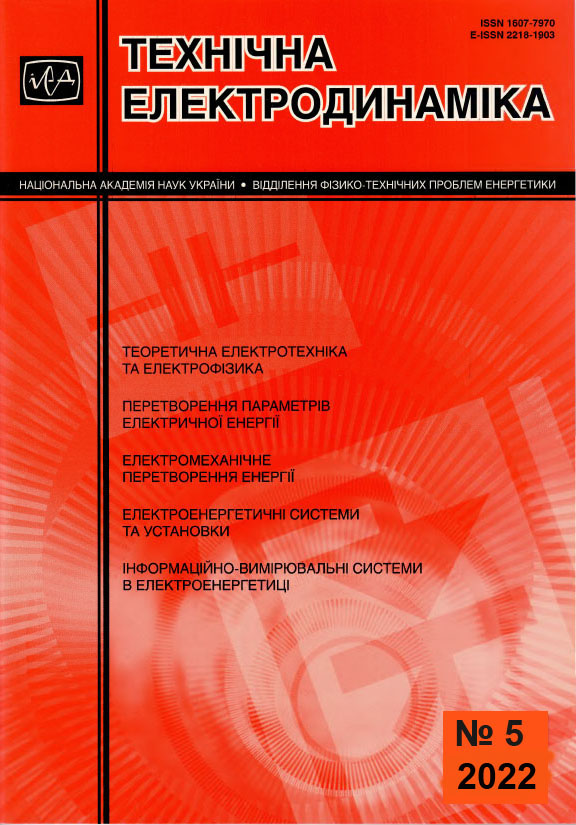Abstract
The main attention in the article is given to the development of the method of nodal transformation of the pricing process in the electricity market. The sequence of implementation of the main constructive stages of its development and further use is given, such as: descriptions of the pricing process; formalization of the pricing process; development of computational procedures for building a simulation model of the pricing process. A distinctive feature of this method from the known and described in the scientific literature is the direct connection of the dynamic energy flow at all stages of the technological process of production, transmission and distribution of electricity with the economic flow. The computational procedures of the method are implemented using the discrete-event approach. The method is designed to build a simulation model of the pricing process in the electricity market, which along with a system of short-term price forecasting models in different market segments, becomes the key in the information and methodological support of multi-agent environment for the market agents interaction. References 13, figures 2.
.
References
Mokhor V.V., Evdokimov V.A. Creation of a multi-agent simulation model of pricing processes in the electricity market. Elektronne modeliuvannia.. 2020. Vol. 42. No 6. Pp. 3-17. (Ukr). DOI: https://doi.org/10.15407/emodel.42.06.003
On approval of the Market Rules: Resolution of the National Commission for Regulation of Economic Competition 14.03.2018 No 307. URL: https://zakon.rada.gov.ua/laws/show/v0307874-18/page#Text (accessed at 24.04.2021). (Ukr).
Evdokimov V.A. Formulation of the problem of building a multi-agent simulation model of pricing processes in the electricity market. Elektronne modeliuvannia. 2021. Vol. 43. No 3. Pp. 47-63. (Ukr). DOI: https://doi.org/10.15407/emodel.43.03.047
Analysis of electricity tariffs and pricing in the EU and OECD countries. Incentive tariff systems: State Enterprise National Energy Company Ukrenergo. URL: https://ua.energy/wp-content/uploads/2018/10/3.-Taryfo_tsinoutv_elektroen.pdf (accessed at 30.09.2018). (Ukr).
Kyrylenko O.V., Blinov I.V., Parus Ye.V., Ivanov H.A. Simulation Model of Day Ahead Market with Implicit Consideration of Power Systems Network Constraints. Tekhnichna Elektrodynamika. 2019. No 5. Pp. 60-67. (Ukr). DOI: https://doi.org/10.15407/techned2019.05.060
Saukh S.Ye. Methodology and Methods of Mathematical Modeling of Energy Engineering in Market Conditions. Elektronne modeliuvannia. 2018. Vol. 40. No 3. Pp. 3-32. (Rus). DOI: https://doi.org/10.15407/emodel.40.03.003
Blinov I.V. Theoretical and practical foundations for the functioning of a competitive electricity market. Kyiv: Naukova dumka, 2015. 216 p. (Ukr).
Ostapchenko K.B., Lisovychenko O.I., Evdokimov V.A., Borukaiev Z.Kh. Creation of Information Modeling System for Analysis of Pricing Processes in the Electricity Market. Electronic Modelin Elektronne modeliuvannia. 2021. Vol. 43. No 4. Pp. 51-68. (Ukr). DOI: https://doi.org/10.15407/emodel.43.04.051
Shinde P., Amelin M. Agent-Based Models in Electricity Markets: A Literature Review. IEEE Сonference Proceedings Innovative Smart Grid Technologies - Asia (ISGT Asia). Chengdu, China, May 21-24, 2019. Pp. 3026-3031. DOI: https://doi.org/10.1109.ISGT-Asia.2019.8880889
Kutsan Yu.H., Blinov I.V., Ivanov H.A. Modelling of Tariff and Price Formation on Retain Market of Electrical Energy of Ukraine in New Conditions of its Functioning. Elektronne modeliuvannia. 2017. Vol. 39. No 5. Pp. 71-80. (Ukr). DOI: https://doi.org/10.15407/emodel.39.05.071
Oprea S., Bara A., Preotescu D., Bologa R., Coroianu L. A Trading Simulator Model for the Wholesale Electricity Market. IEEE Access. 2020. Vol. 8. Pp. 184210-184230. DOI: https://doi.org/10.1109/ACCESS.2020.3029291
Stoft S. Power System Economics. Designing Markets for Electricity. Moskva: Mir, 2006. 623 p. (Rus).
Voronovsky G.K. Reflections on Energy: Fates and Events, Observations and Comments. Izbrannye trudy: v 5-ti tomah. Vol. 1. Kharkov: Institute for Systems Research in Energy, 2003. 260 p. (Rus).

This work is licensed under a Creative Commons Attribution-NonCommercial-NoDerivatives 4.0 International License.
Copyright (c) 2022 Array






